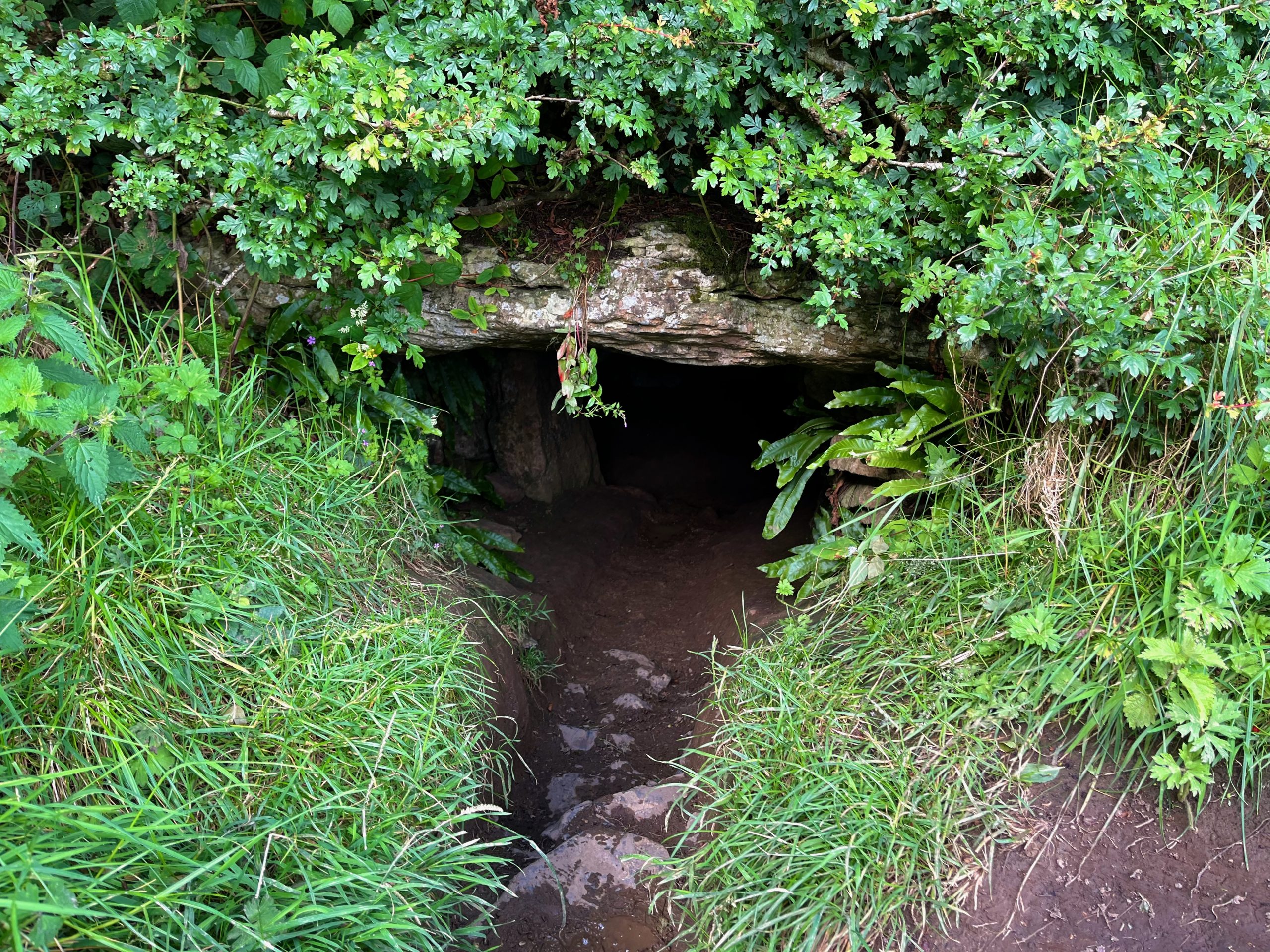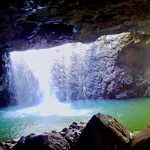Oweynagat (Cat Cave)
Birth place of Samhain (Halloween)
Contae Shligigh (County Sligo), Eire (Ireland)

In my quest to unearth the secrets of my ancestors and the ancient Gaelic rainforest peoples, I find myself inexorably drawn to the timeless beauty and mystique of County Sligo, a land that holds the key to unlocking the hidden chapters of my family’s legacy and the awe-inspiring history of the Connacht region of Ireland.
Sligo holds a special place in the saga of the Hart Clan, my forebears. The Harts of Tara were forced to flee the hallowed grounds of Tara during the tumultuous Anglo-Northman invasion led by King Henry of England in the 12th Century. Seeking refuge, the Hart Clan sought solace in the embrace of County Sligo. It was here, in the rugged beauty of Sligo, that the Harts, or O’hAirt as they were known in Gaelic, made their home, sharing these lands with the O’Connor Clan for centuries. Their dominion over Sligo endured from the 12th Century until the fateful 16th Century British invasion, orchestrated by the ruthless, Oliver Cromwell.
County Sligo, nestled in the Connacht region of Ireland’s enchanting North West, served as the backdrop for the Hart’s compelling tale of resilience and heritage.
My exploration of Sligo took an unexpected turn after I viewed my video of the Hill of Tara. Unbeknownst to me, the video captured a fleeting, yet momentous, encounter as I touched the sacred “Stone of Destiny.” Little did I know, this simple act would unveil a connection to the ancient Goddess Morrigan, mistress of battle and war—a shape-shifter who often assumed the form of a raven or crow. It was as if I had unknowingly glimpsed into the otherworldly realm of this fierce deity. This revelation spurred my curiosity to uncover her sacred abode in Rathcroghan, which was none other than the mysterious Oweynagat Cave in County Sligo. Oweynagat also boasts the distinction of being the birthplace of the legendary Irish Warrior Queen Medb, a figure who has long held a revered place in my heart. Some two millennia ago, Queen Medb held sway over Connacht from her majestic home in Rathcroghan.
I felt a pull to seek out this hallowed cave and the spiritual Queendom of my ancient foremothers and forefathers.
Rathcroghan, the dwelling place of Connacht’s venerable Queens and Kings, is a time capsule that spans over 10,000 years of history. Over two square miles, it boasts a staggering 240 ancient sites, harkening back 5,500 years. Among these sacred grounds lie burial mounds, ring forts, the vestiges of spiritual temples, and the awe-inspiring Oweynagat, known as the “cave of the cats.” These mystical landscapes harken back to a time before the written word, to the era of the Celts and the Tuatha Dé Danann. Within Oweynagat, oral tradition whispers of an entrance to another world, known as Tir na nOg. It was a realm that coexisted with the world above, a dimension where demons, monsters, and mortals intermingled in mythical proportions.
Below is a video of my daughter (Pippi’s) and my quest to find and explore the sacred Irish Oweynagat of Rathcroghan, County Sligo, Connacht.
♥Youtube does not allow me to alter the video size; thus, if you are having trouble viewing it here, please watch it on YouTube—after reading the rest of the blog below–of course! 🙂
The Birth of Halloween
The 31st of October, a date that carries with it the echoes of the Samhain festival—a moment when the Irish year gracefully took its final bow, making way for the dawn of a new one. Samhain, this sacred day of transition, held within it the mysterious power to bridge the gap between our world and the ethereal realm of Tir na nOg. Through the enchanting Oweynagat cave, denizens of this otherworldly domain would venture forth, their presence heralding the imminent arrival of winter.
During Samhain, a time when the boundary between our world and the next grew thin, the denizens of the otherworld, with their otherworldly ways, would emerge from the depths of Oweynagat. They would roam the Irish landscape, their intent shrouded in mystique. Some say they were the custodians of nature, preparing it for the coming winter; others tell of a darker purpose, as these ethereal beings had the power to capture unsuspecting mortals, dragging them into the depths of the cave and down into the world below. To thwart these otherworldly creatures and evade their grasp, the ancient Irish lit bonfires, creating a protective barrier of light. They also cleverly disguised themselves as demons, beasts, and ghouls, blending seamlessly with the spirits of Samhain.
It’s a tradition that has transcended the annals of time, inspiring the modern celebration known as “Halloween.” The ghosts and goblins that now roam our neighborhoods on All Hallows’ Eve owe their origins to the cunning disguises worn by Irish ancestors to ward off the spirits of Samhain.
Yet, the advent of Christianity in Ireland brought with it a fear of the ancient Irish spirituality. To the first Christians in Ireland, Oweynagat was seen not as a mystical gateway to another world but as something far more sinister—a passage to the depths of hell itself. They referred to it as the “Hell Cave,” a place to be avoided at all costs.
As I continue my journey of exploration and discovery, my next stop takes me to the burial cairn of Queen Medb, where I anticipate yet another “otherworldly” experience awaiting me. Stay tuned for the next chapter of this enchanting tale.
Sources
Four Masters, Annals of Ireland. Translated and Edited by John O’DOnovan, 1856, Dublin.
Keating, Geoffrey, The History of Ireland From the Earlier Period to the English Invasion. Translated from Irish and noted by John O’Mahony, NY, 1857.
O’Hart, John, Irish Pedigrees. Volume 2, Chapter IV, 1892, pp 351- 709.
https://www.nationalgeographic.com/travel/article/inside-irelands-gate-to-hell-that-birthed-halloween








Leave a Reply